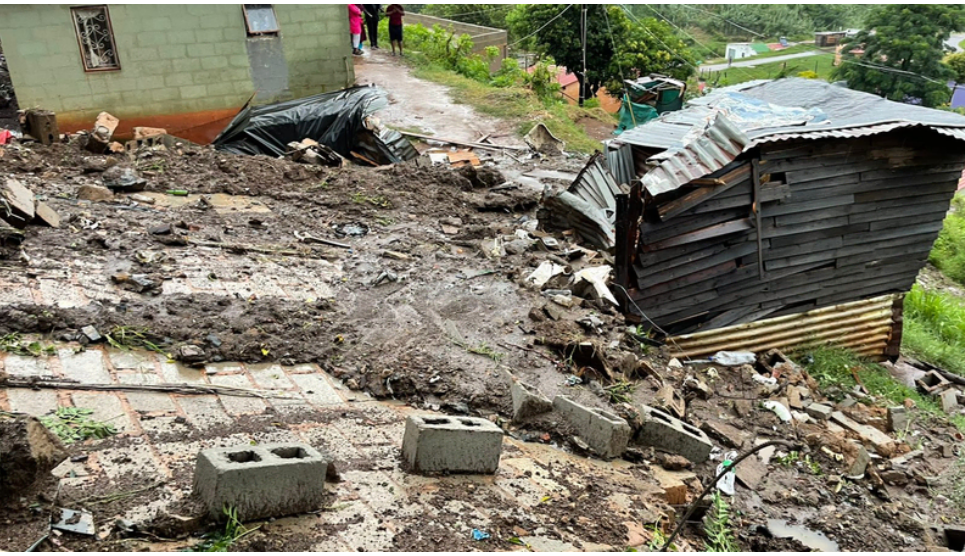
BLOG
Thinking about KwaZulu-Natal's agriculture and food production in this time of crisis

What we
witnessed in KwaZulu-Natal over the past couple of days is heartbreaking – the loss of lives and the destruction of
communities and businesses are unbearable. As President Cyril Ramaphosa pointed
out in his Address to the Nation on 18 April 2022, "All parts of the province were affected by the
rainfall, with the entire Ethekwini metro and the districts of iLembe, Ugu,
King Cetshwayo and uMgungundlovu being most affected."
I am yet to get
a complete picture of the damage in the agriculture and agribusiness sectors.
Still, I want to make a few points about KwaZulu-Natal's contribution to South
Africa's food sector and whether the country is at risk due to the provincial
damages.
KwaZulu-Natal is
a significant producer of various agricultural products such as sugar, fruit,
milk, and poultry. Estimates from the Bureau for Food and Agricultural Policy (BFAP) show that around 30% of South Africa's dairy herd is
located in KwaZulu-Natal, and significant volumes of chicken eggs and pigs are
produced with a 12% share each. Almost 81% of the country's sugar is produced
in the province, which, if products are not produced nor transported, will have
economic consequences for the entire industry.
The province
also serves as an entry for imported food products. To again quote last night's
words of President Ramaphosa, "the Port of Durban is one of the largest
and busiest shipping terminals on the continent and vital to our country's
economy – it has been severely affected. Access to the port has been disrupted
by flooding and extensively damaged the Bayhead Road, which links the Durban
Port Operations to the rest of the country." This remains a significant trade
risk – importing and exporting agriculture and food products (amongst other
goods).
With that said, recent
communication from Transnet suggests that there is progress in resuming the
operations and alternative routes to the port.
To people who
might have questions about whether the destruction could have spillover to much
of South Africa's food security; my initial thoughts are that if the government,
Transnet and logistical role players continue working effectively at finding
alternative routes to the port, as is the case at the present moment, then we should
not have a near-term food security concern for the country.
KwaZulu-Natal is
not necessarily the epicentre of agriculture in South Africa. Provinces in
central South Africa – the Free State, Gauteng, Mpumalanga, North West and
Limpopo – hold far more critical positions in the country's food system. This
is because of their abundant agricultural production and food processing
capacity.
Maize meal and
wheat flour – both staples to most South African diets – are primarily produced
in the Free State, Mpumalanga, North West and the Western Cape. These provinces account for over 60% of the production
of each of these grains and process over 50% of them.
KwaZulu-Natal processes
roughly 8% of the 11.5 million tonnes of maize consumed in South Africa each
year. In wheat, KwaZulu-Natal processes approximately 21% of the annual
consumption. The numbers vary per product, but the point here is that food
supply chains are not concentrated in one particular province. Therefore, the
devastation in KwaZulu-Natal, in the near term, at least, holds minimal risks
to food security in much of the country.
KZN's role
in trade
While the
KwaZulu-Natal province is not a dominant producer of food domestically, it
plays a critical role in connecting South Africa's food system with the
international community through the Port of Durban. Thus, the current
disruptions weigh even more heavily on businesses and farmers in agriculture.
On average, 75% of the country's grains are transported by road annually, which
are in bad shape because of excessive rains and generally poorly maintained
roads in many small towns.
These are
largely exported through the Port of Durban. The same is true for imported food
products such as rice, wheat and palm oil, among other products. The volumes
are also large for horticulture, specifically citrus, a leading exportable
agricultural product in South Africa. So, the damages in KwaZulu-Natal, in this
sense, will be felt across the country's agricultural economy. In the case of
citrus, South Africa is at the start of its export season, which makes
conditions even more challenging for the industry.
NOTE:

0 COMMENTS
LEAVE A COMMENT